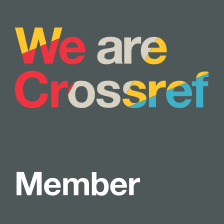Jelena Lukić Nikolić – High School of Modern Business, Terazije 27, Belgrade, Serbia
Aleksandar Dejanović – High School of Modern Business, Terazije 27, Belgrade, Serbia
Snežana Lazarević – College of Sports and Health, Toše Jovanovića 11, Belgrade, Serbia
7th International Scientific-Business Conference – LIMEN 2021 – Leadership, Innovation, Management and Economics: Integrated Politics of Research – CONFERENCE PROCEEDINGS, Online/virtual, December 16, 2021, published by the Association of Economists and Managers of the Balkans, Belgrade; Printed by: SKRIPTA International, Belgrade, ISBN 978-86-80194-54-7, ISSN 2683-6149, DOI: https://doi.org/10.31410/LIMEN.2021
Keywords:
Digitalization;
Organizational behavior;
Remote work;
Agile leaders
Abstract
Fourth industrial revolution and digital economy have affected many organizations and fostered them to become digital in order to survive and succeed. Leaders of digital organizations need to embrace numerous changes not only in organizational structure that becomes flat with minimal hierarchy, control, bureaucracy but also in all organizational processes and activities. One of the most important organizational processes is internal communication which becomes digital due to modern information and communication technologies and tools. This paper shows the role and importance of agile leaders in establishing and nurturing effective internal communication in digital organizations. To achieve the goal of effective digital communication in all directions and through the entire organization, leaders should be agile enough to establish appropriate communication channels, stimulate creative and critical thinking, new ideas, information and knowledge share, real time feedback, build and nurture trust among employees and engage employee participation in decision making.

Download file
LIMEN Conference
Creative Commons Non Commercial CC BY-NC: This article is distributed under the terms of the Creative Commons Attribution-Non-Commercial 4.0 License (https://creativecommons.org/licenses/by-nc/4.0/) which permits non-commercial use, reproduction and distribution of the work without further permission.

References
Bovee, C., & Thill, J. (2020). Business Communication Today. Global Edition, Pearson.
Deloitte (n.d.). The digital workplace: Think, share, do. Transform your employee experience. Available at: https://www2.deloitte.com/content/dam/Deloitte/mx/Documents/human-capital/The_digital_workplace.pdf, Retrieved 22. 10. 2021.
Dudić, B., Drahošová, M., Lukić, J., Dudić, Z., Smoleň, J., & Mirković, V. (2018). Counterparty credit risk closure: challenges in Big Data Era. Proceedings of the 31st International Business Information Management Association Conference Innovation Management and Education Excellence through Vision 2020, Milano, Italy, pp. 2441 – 2453.
Dwyer, J. (2020). The Business Communication Handbook. Cengage Learning.
Erjavec, K. (2020). Employees’ communication during COVID-19. In 6th International Scientific-Business Conference – LIMEN 2020 – Leadership, Innovation, Management and Economics: Integrated Politics of Research – SELECTED PAPERS, Online/virtual, November 26, 2020 (pp. 67-75). Belgrade: Association of Economists and Managers of the Balkans, https://doi.org/10.31410/LIMEN.S.P.2020.67
Kane, G., Palmer D., Phillips, A., Kiron, D., & Buckley, N. (2016). Aligning the organization for its digital future. MIT Sloan Management Review and Deloitte University Press. Available at: https://aechile.cl/wpcontent/uploads/2016/09/2016_MIT_DeloitteAligningDigitalFuture1.pdf, Retrieved 23. 10. 2021.
Lukić J., & Vračar, M. (2018). Building and nurturing trust in virtual project teams. Strategic Management International Journal of Strategic Management and Decision Support Systems in Strategic Management, 23(3), 10-16.
Lukić, J., Jaganjac, J., & Lazarević, S. (2020). The successfulness of crisis management teams’ response to the crisis caused by the COVID-19 pandemic. Ekonomika preduzeća, 68(7/8), 545-556. DOI: 10.5937/EKOPRE2008545L
Lukić Nikolić, J. (2021). Angažovanost zaposlenih sa organizacionim ponašanjem i menadžmentom ljudskih resursa. Beograd: Visoka škola modernog biznisa.
Martic, K. (2019). Digital Transformation: 15 Reasons Why Internal Communication is the Key, Available at: https://blog.smarp.com/digital-transformation-15-reasons-why-internal-communication-is-the-key, Retrieved 19. 10. 2021.
Mirković, V., Lukić, J., Lazarević, S., & Vojinović, Ž. (2019). Key Characteristics of Organizational Structure that Supports Digital Transformation. In 24th International Scientific Symposium Strategic Management and Decision Support Systems in Strategic Management, Subotica 2019 (pp. 255-261), https://doi.org/10.46541/978-86-7233-380-0_46
Petković, M., Lukić, J. (2013). Uticaj informacione tehnologije na dizajn organizacije: primer organizacije u zdravstvu. Sociologija, 55(3), 439-460. DOI: 10.2298/SOC1303439P
Schwarzmüller, T., Brosi, P., Duman, D., & Welpe, I. (2018). How Does the Digital Transformation Affect Organizations? Key Themes of Change in Work Design and Leadership. Management revue, Socio-economic studies, 29(2), 114 – 138. DOI: 10.5771/0935-9915-2018-2-114
Snow, C.C, Fjeldstad O. D., & Langer, A. M. (2017). Designing the digital organization. Journal of Organization Design, 6(7), 1-13. DOI 10.1186/s41469-017-0017-y
Virijević Jovanović, S., & Jošanov Vrgović, I. (2017). Uloga zaposlenih i menadžmenta ljudskih resursa u procesu stvaranja vrednosti brenda. Škola biznisa, 1/2017, 41-50. DOI 10.5937/ skolbiz1-14336
Welch, M., & Jackson, P. R. (2007). Rethinking Internal Communication: A Stakeholder Approach. Corporate Communications: An International Journal, 12(2), 177–198. DOI: 10.1108/13563280710744847




